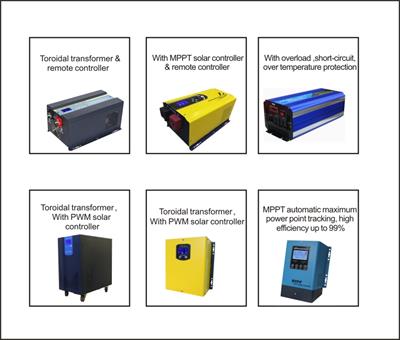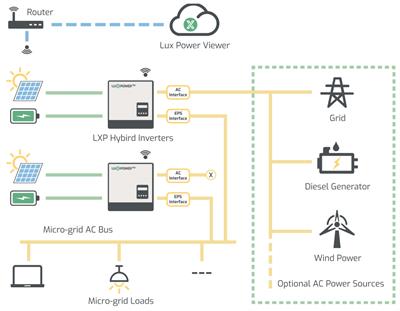Inverters play a crucial role in converting direct current (DC) into alternating current (AC), which is essential for powering our homes and various electronic devices. While using an inverter, you might notice it becoming warm to the touch. This phenomenon is perfectly normal and often prompts curiosity about what causes this warmth. In this article, we will explore the reasons behind warm inverters and address common misconceptions.
At the heart of an inverter's function is energy conversion. When DC power is converted into AC power, some energy is inevitably lost in the form of heat due to the conversion process. This phenomenon is known as energy dissipation, and it occurs in virtually all electrical devices. The efficiency of the inverter determines how much of the energy is converted into usable power versus energy that is lost as heat. Typically, high-quality inverters have higher efficiency ratings, resulting in less heat production.

Several components within an inverter contribute to heat generation. The most significant culprits are the power transistors and capacitors. Power transistors can get hot as they switch on and off rapidly to control the flow of electricity. Similarly, capacitors store and release energy, which also generates some heat during operation. As these components work together to maintain efficient performance, they inevitably produce heat, which needs to be managed effectively to prevent overheating.

To combat the heat generated within an inverter, manufacturers implement various cooling mechanisms. These can include built-in heat sinks, which are designed to dissipate heat away from the internal components, and cooling fans that provide airflow to maintain an optimal operating temperature. Some advanced inverters even use liquid cooling systems to ensure that they stay within safe temperature limits. These cooling measures are essential to prolong the lifespan and efficient operation of the inverter.
It’s important to understand that a warm inverter does not necessarily indicate a malfunction. Most inverters are designed to operate within a certain temperature range, and warmth is a part of their normal operation. However, if an inverter becomes excessively hot, it may be a sign of an issue. Users should monitor their inverters for any unusual signs, such as unusual noises or dramatic temperature increases, which could indicate the need for maintenance or replacement.
Understanding why inverters feel warm to the touch helps demystify their operation and reassures users that this is a normal occurrence. The energy conversion process, combined with the internal components of the inverter, naturally results in heat generation. With proper cooling mechanisms in place, these devices can function effectively and safely in our modern power systems. Next time you notice your inverter warming up, remember that it’s just doing its job!
Next:Understanding Electric Vehicle Battery Charging Status: Techniques and Significance
Previous:Understanding DC-DC Converters: Powering the Future of Electronics
Contact Person: Miss. Kiki
| WhatsApp : | +8617763224709 |
|---|---|
| Skype : | +8617763224709 |
| WeChat : | +8617763224709 |
| Email : | kiki@lifepo4-battery.com |